Why you can trust Tom's Hardware
Our standard benchmarks and power tests are performed using the CPU’s stock frequencies (including any default boost/turbo), with all power-saving features enabled. We set optimized defaults in the BIOS and the memory by enabling the XMP profile. For this baseline testing, the Windows power scheme is set to balanced (default), so the PC idles appropriately.
To get the most out of the Intel Alder Lake chips, you need to be on Windows 11 with its updated scheduler. In most cases, Windows 10 performs well. However, some tests (Cinebench R20, Corona and POVRay) take a significant hit. In short, if you’re going with Alder Lake, you must upgrade to Windows 11 for the best results across the board. That may change with patching and updates in the future, though.
Synthetic Benchmarks
Synthetics provide a great way to determine how a board runs, as identical settings should produce similar performance results. Turbo boost wattage and advanced memory timings are places where motherboard makers can still optimize for either stability or performance, though, and those settings can impact some testing.
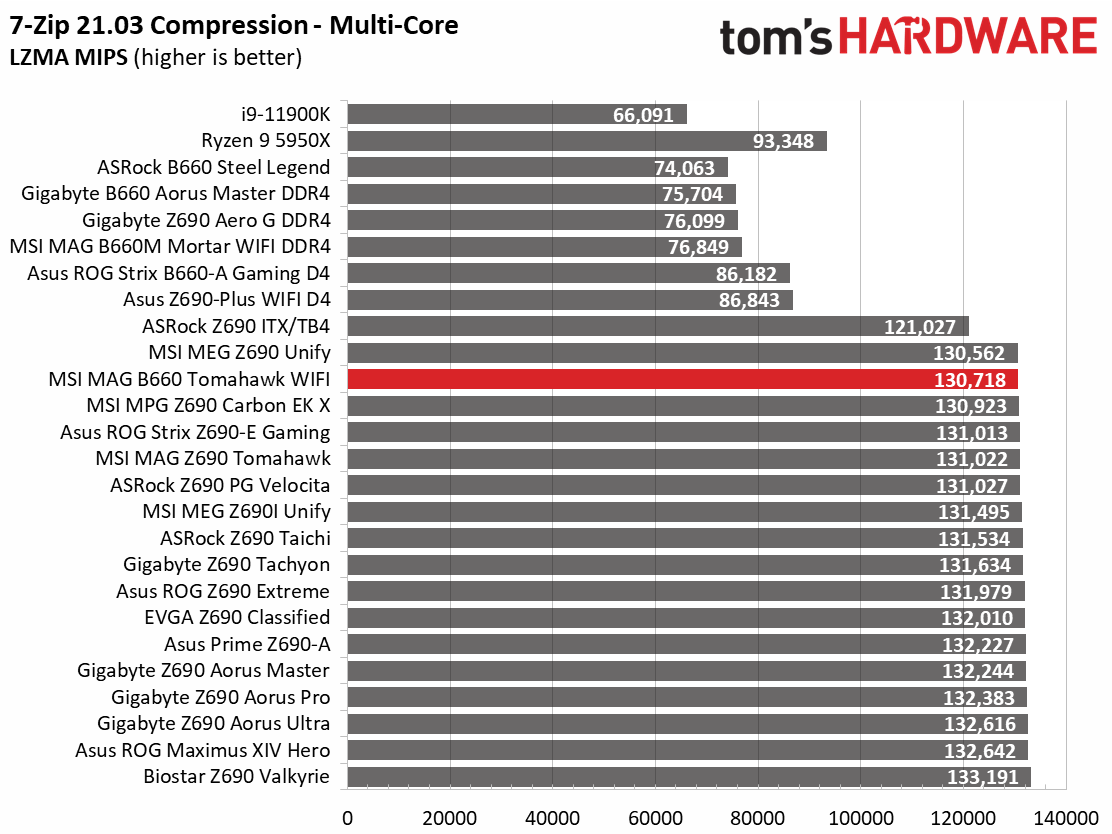
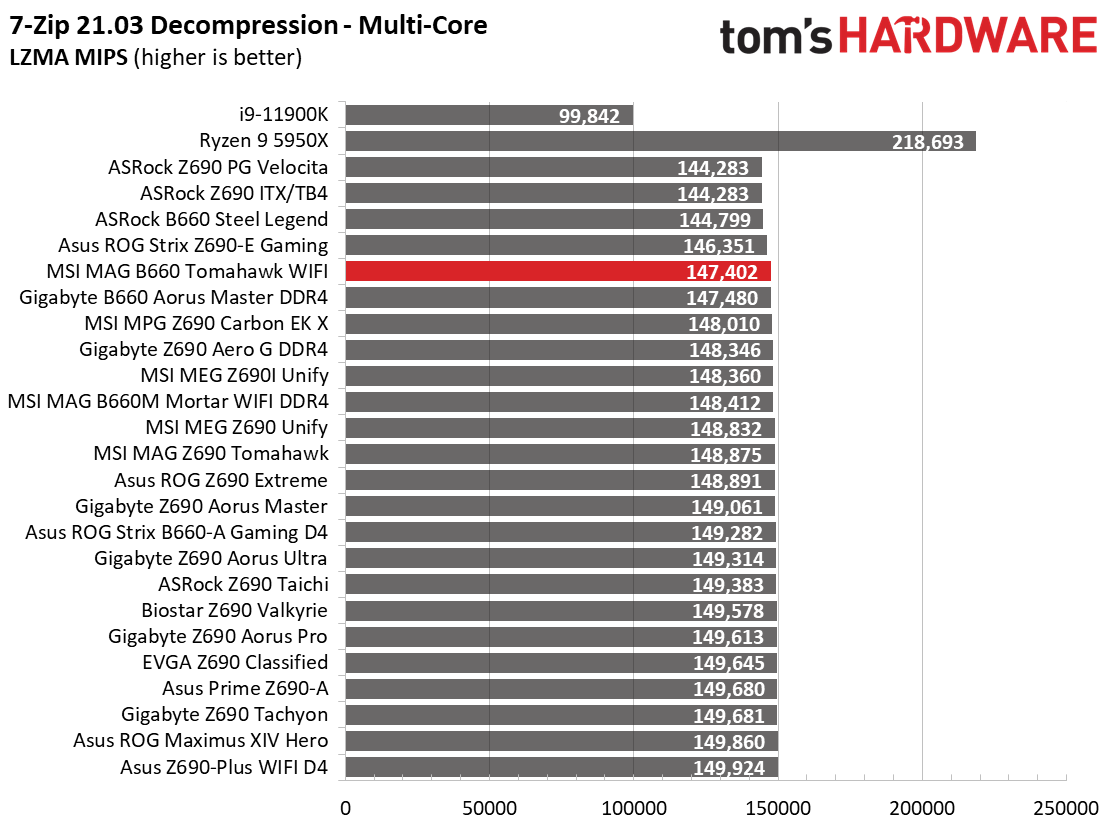


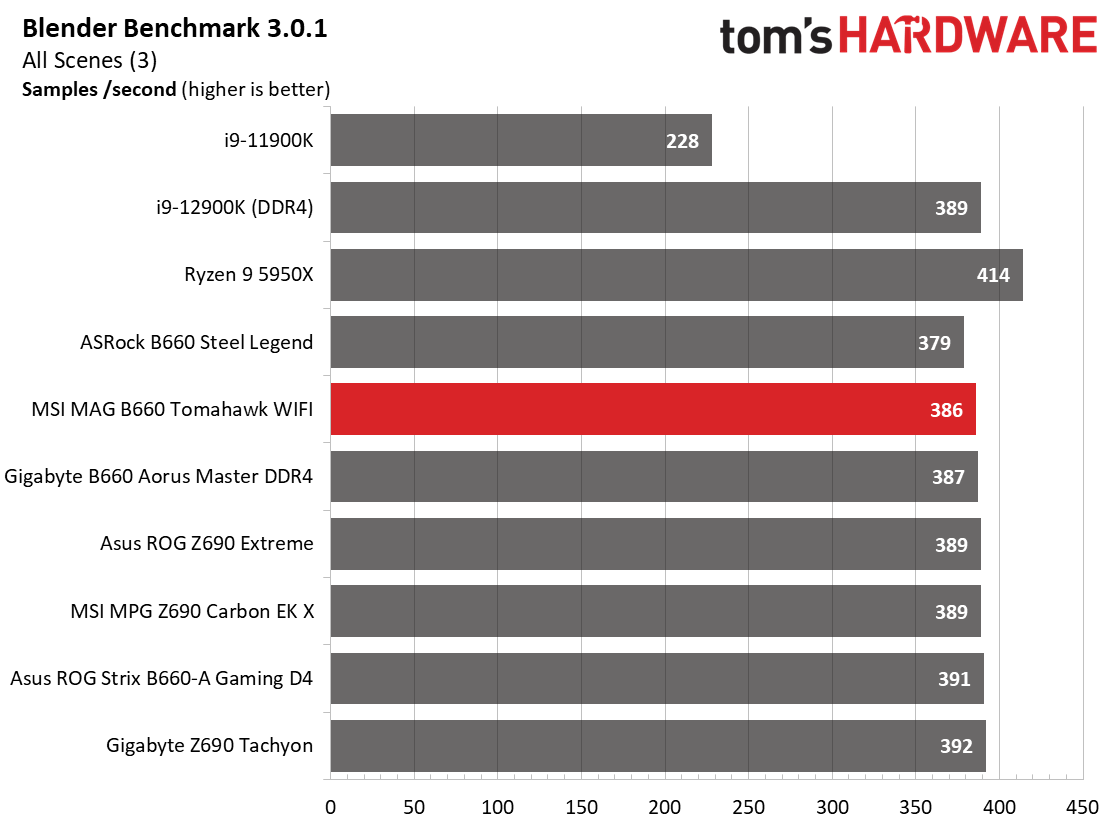
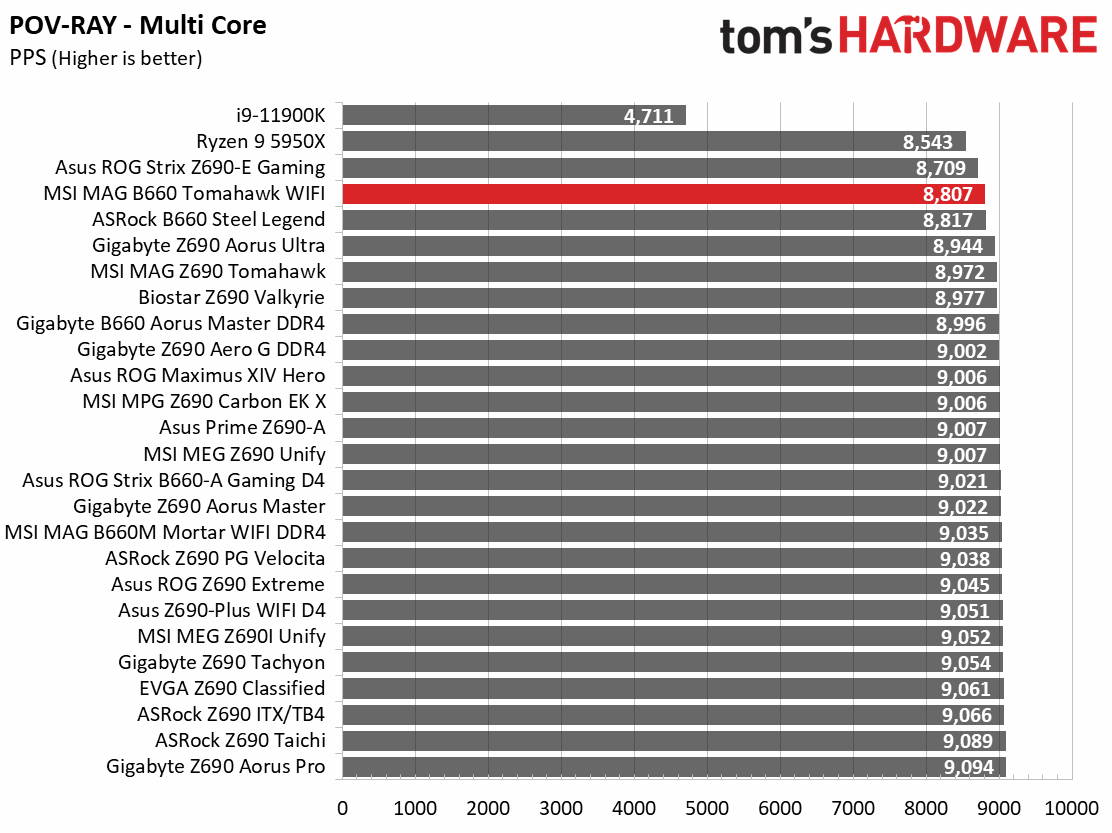
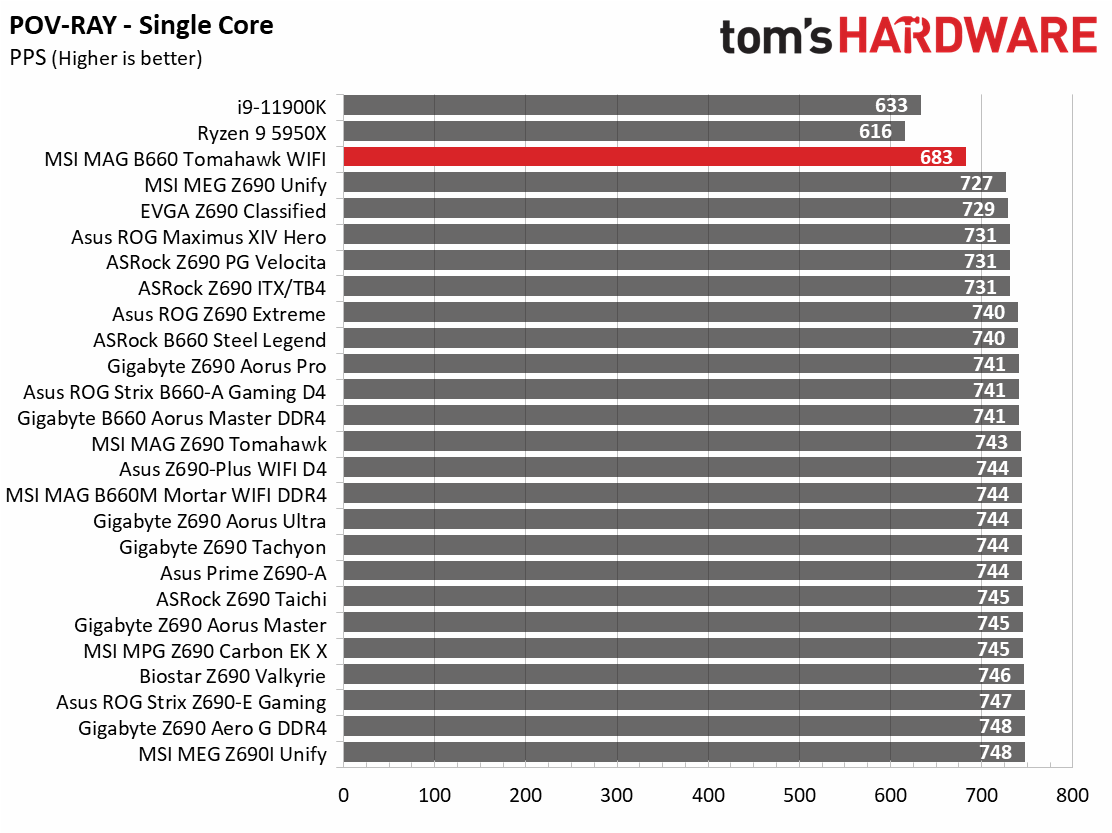




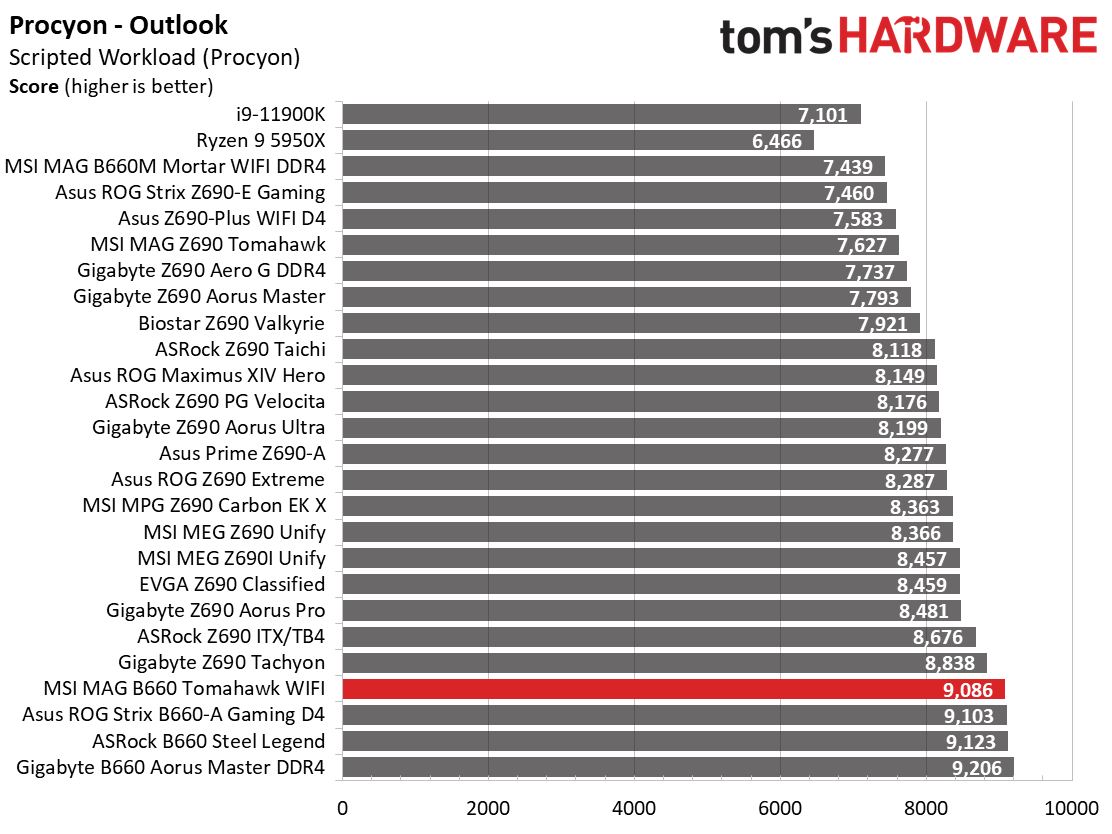
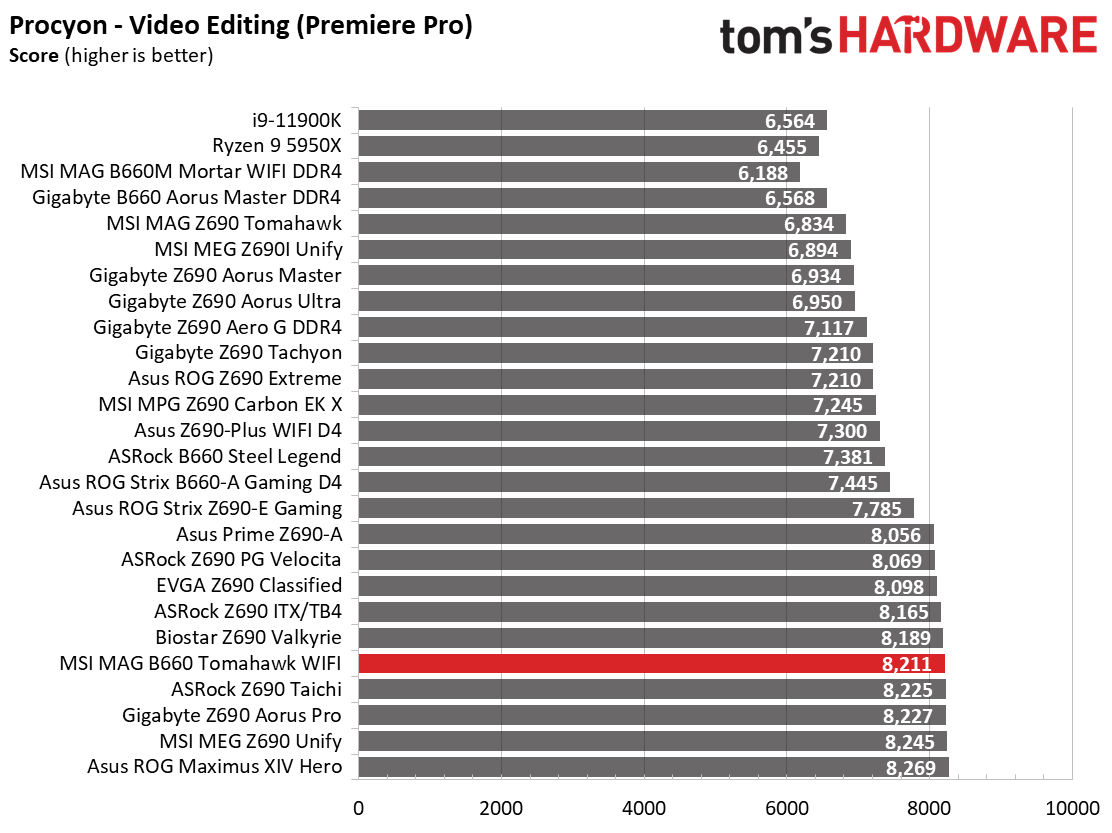
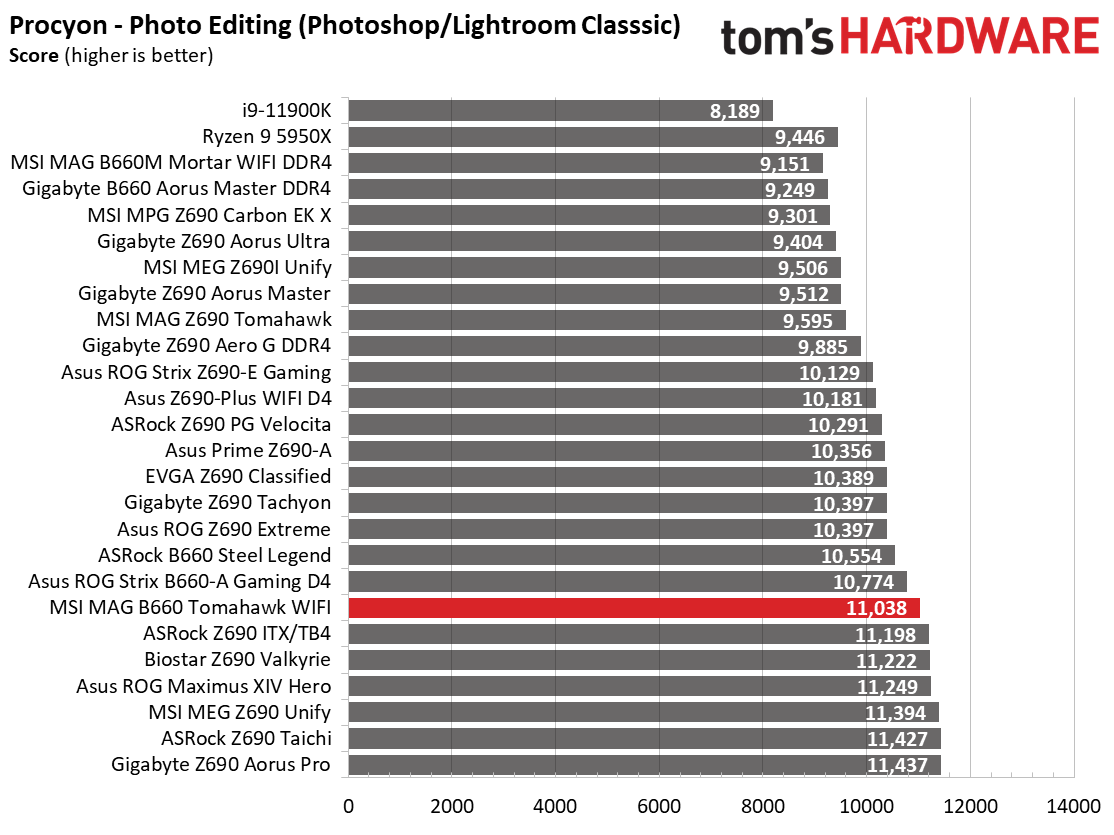
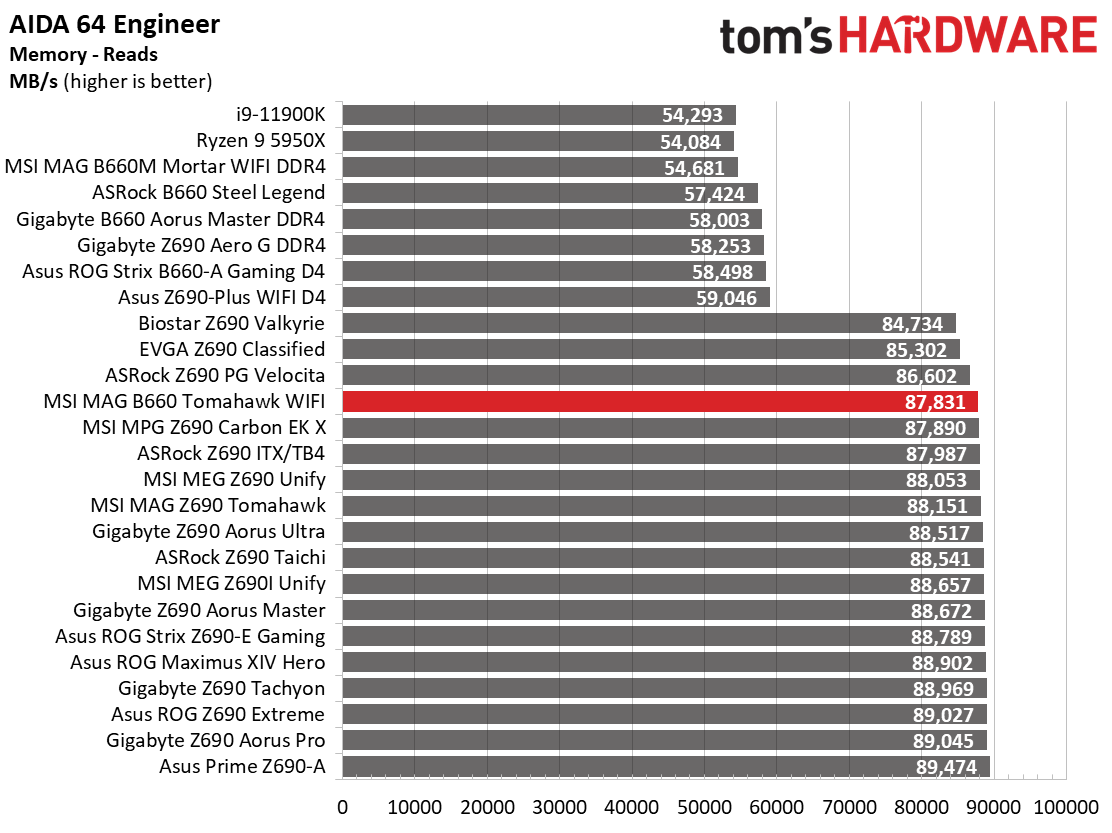

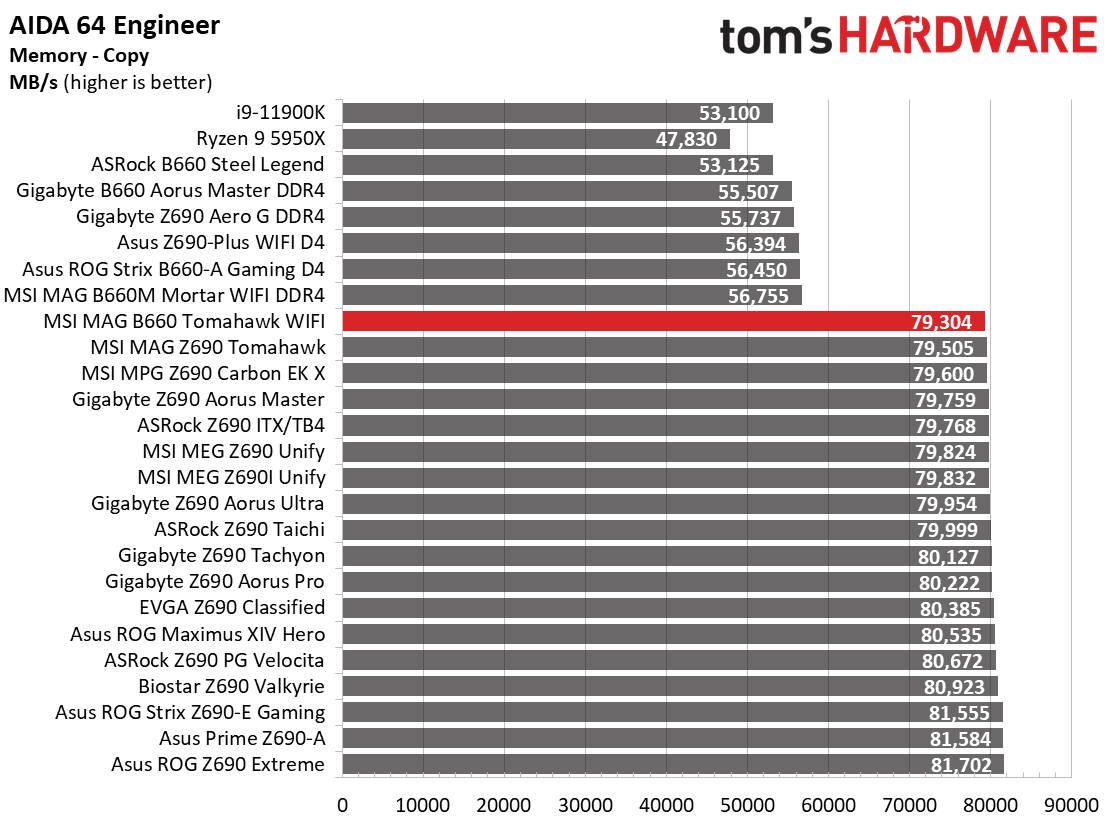

Results in our synthetic tests were average overall, though individual results were all over the place. The Tomahawk did well across all of the Procyon tests (Office and Photo/Video editing), while the more real-world type tests, including 7Zip, Cinebench, and POV_Ray, were all slower than most other boards. This is mostly due to the throttling we saw on the heavier multi-thread loads we tested with.
Timed Applications

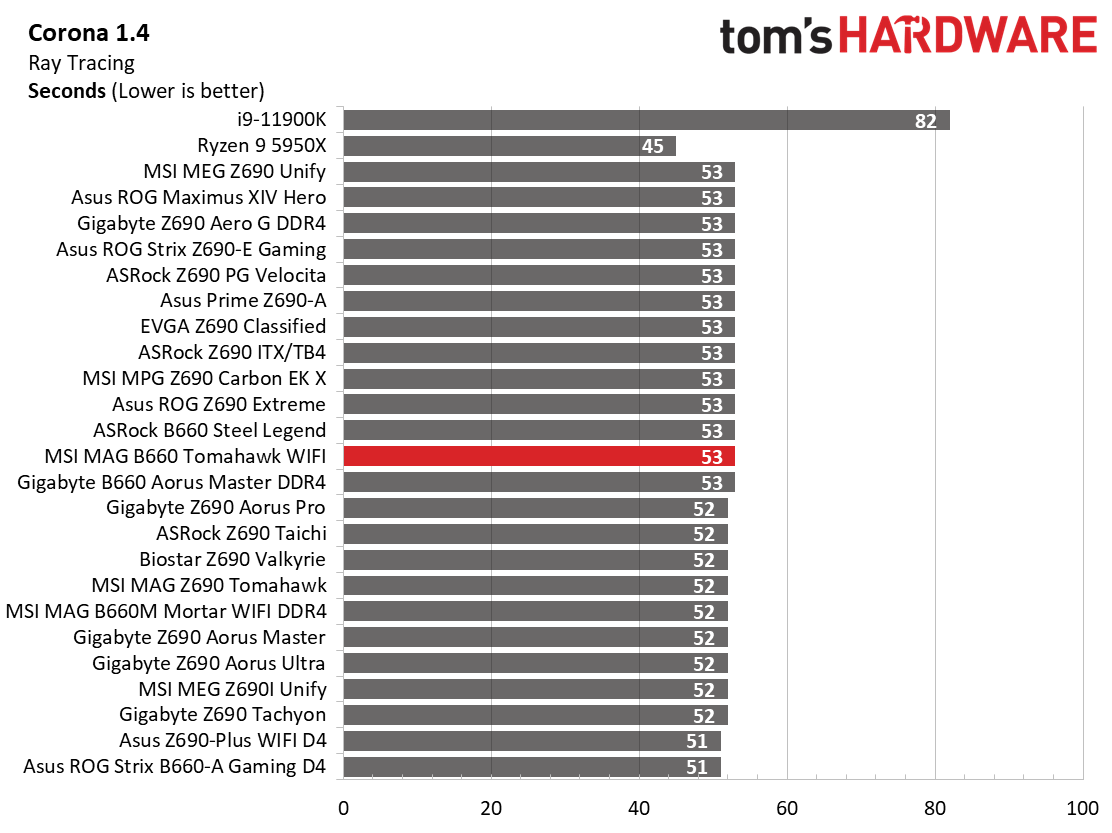
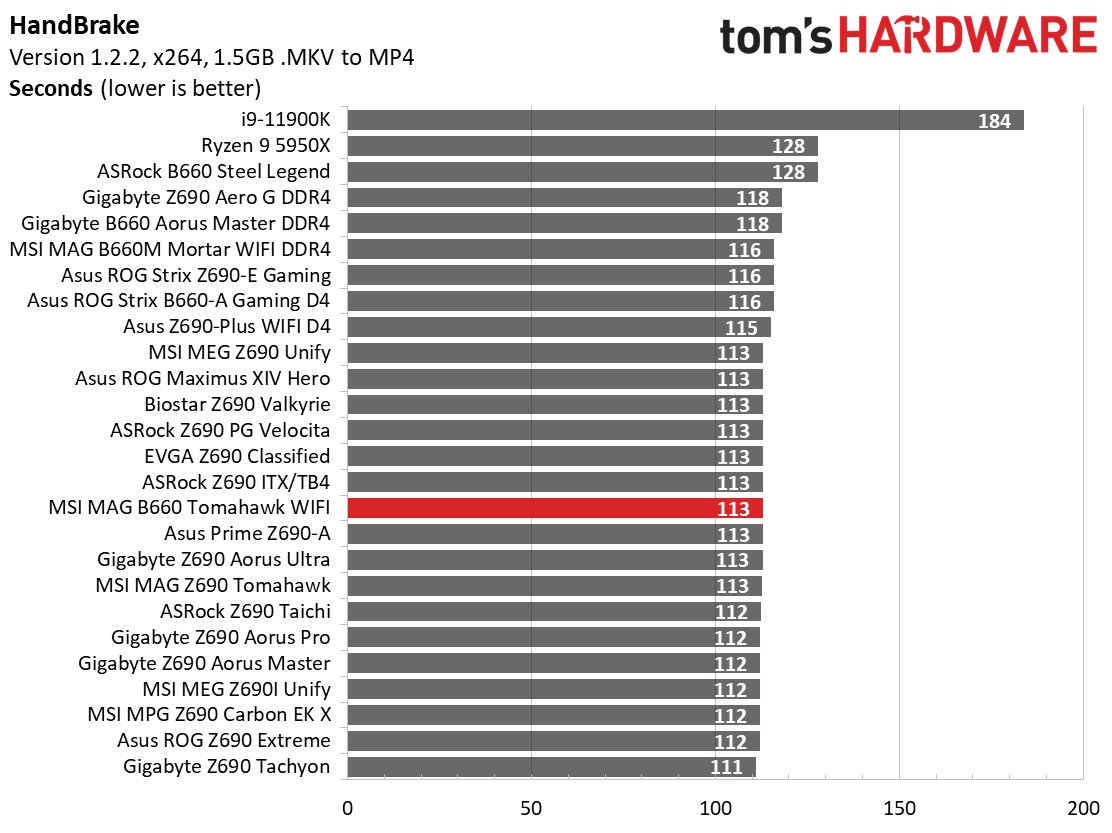
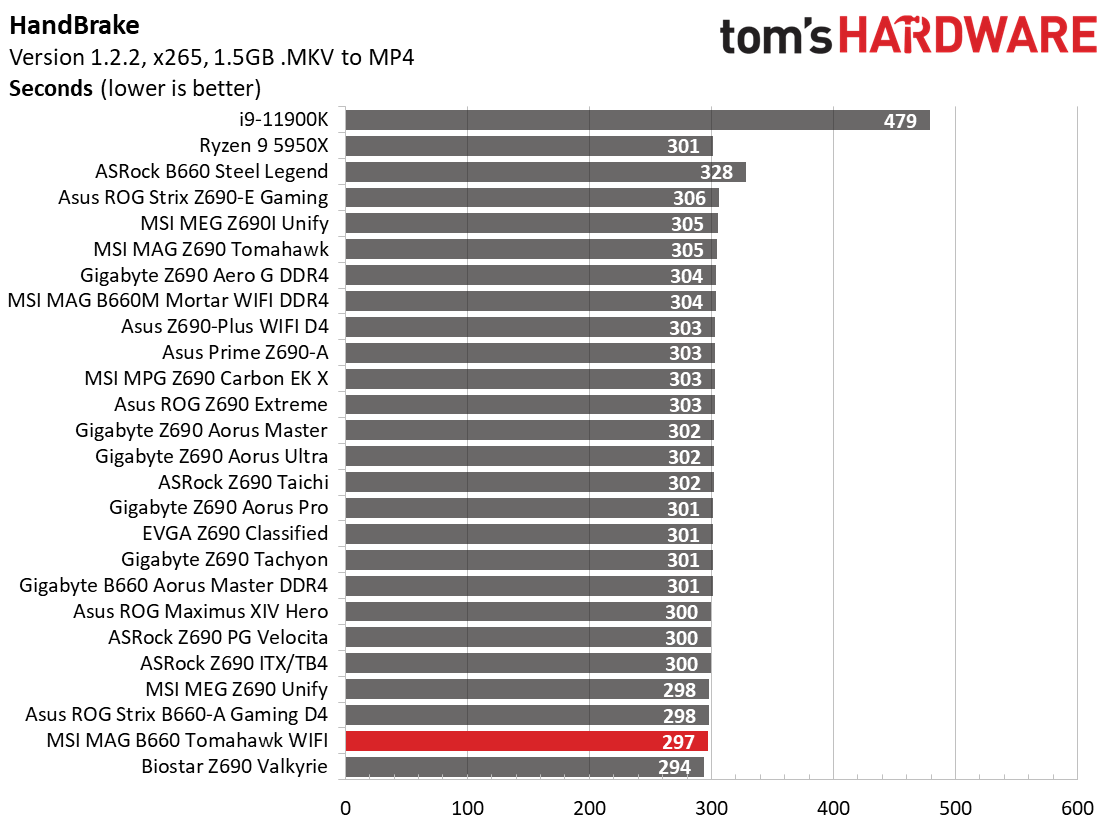
The Tomahawk displayed sub-par results in LAME testing (10.1 seconds - one of the slowest results). In comparison, the Corona benchmark was average, finishing in 53 seconds. Handbrake results were also average, completing the x264 test in 113 seconds and the x265 test in 297 seconds - one of the fastest results so far. Here again, it’s a tale of which test as to where it falls on the performance scale.
3D Games and 3DMark


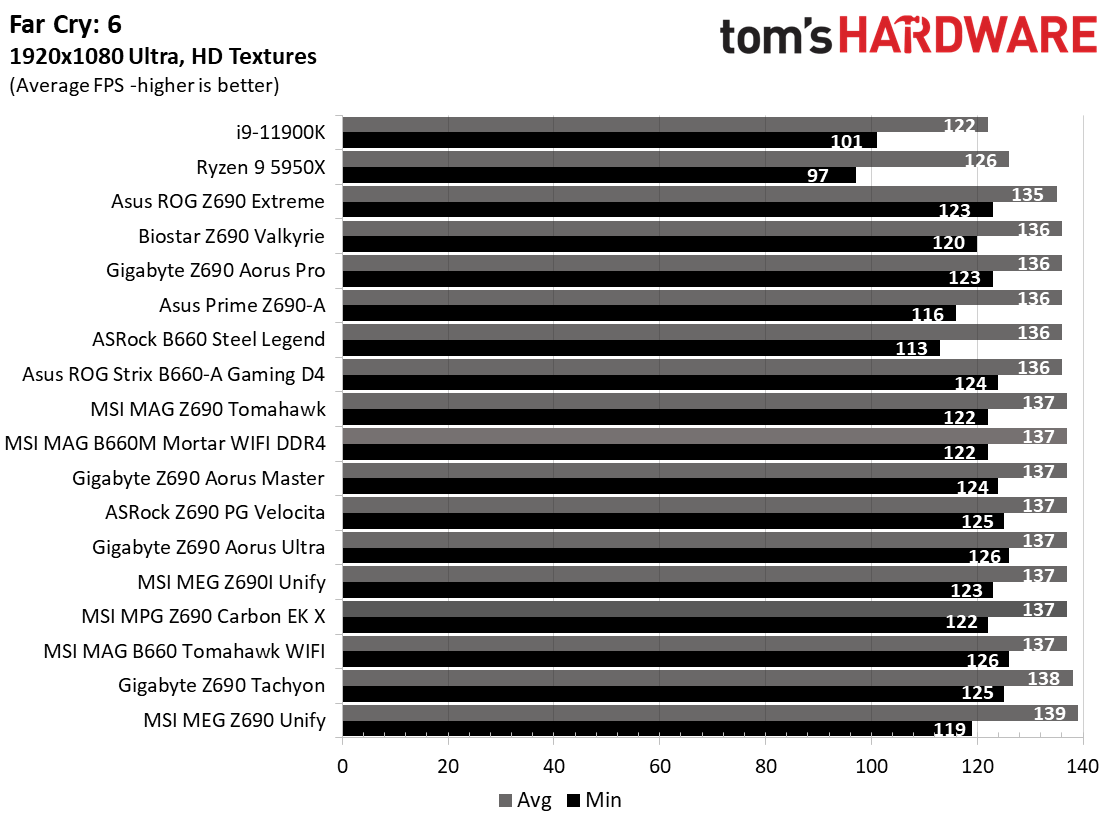
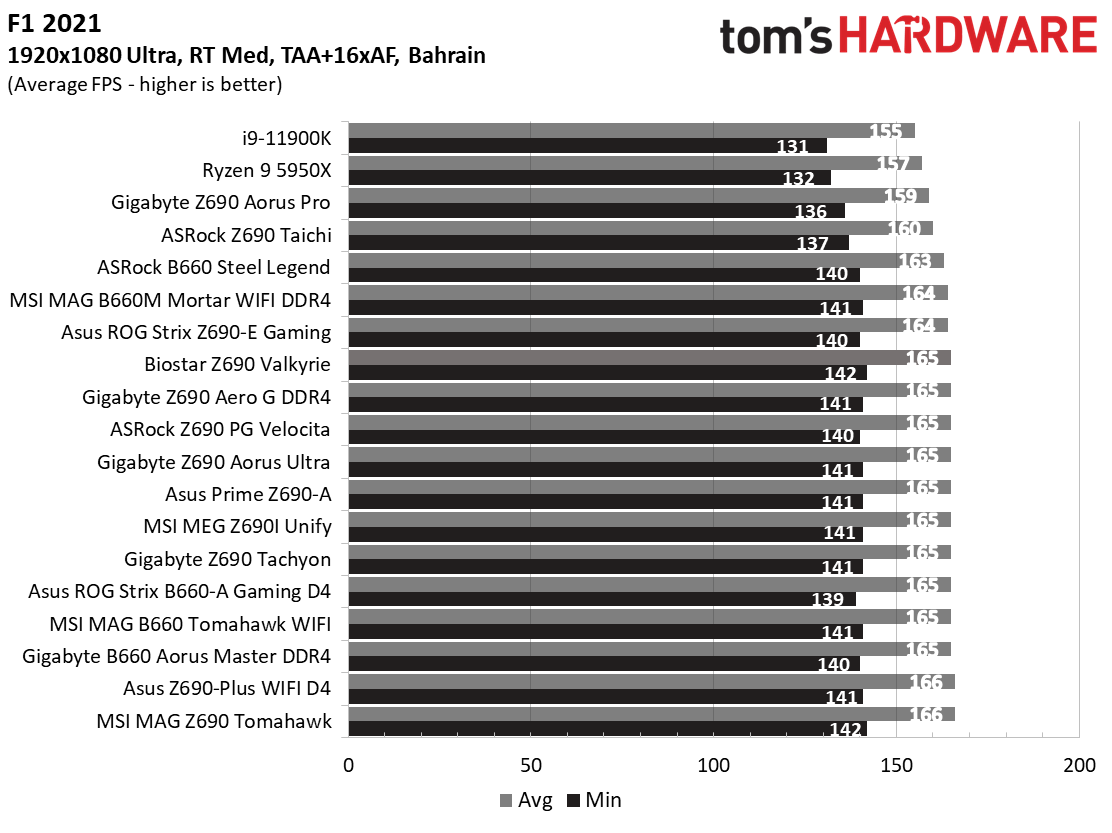
Starting with the launch of the Z690 chipset, we’ve updated our game tests, updating to Far Cry 6 and shifting from F1 2020 to F1 2021. We run the games at 1920x1080 resolution using the Ultra preset (details listed above). As the resolution goes up, the CPU tends to have less impact. The goal with these settings is to determine if there are differences in performance at the most commonly used resolution with settings most people use or at least strive for. We expect the difference between boards in these tests to be minor, with most falling within the margin of error differences. We’ve also added a minimum FPS value, as that can affect your gameplay and immersion experience.
In F1 2021, the Tomahawk averaged 165 frames per second (fps) with minimums of 141 fps, an average result. In Far Cry 6, the EK X averaged 137 fps, with a minimum of 126 fps, some of the better results thus far, especially on the minimum fps for Far Cry 6.
Get Tom's Hardware's best news and in-depth reviews, straight to your inbox.
Our trend of not seeing significant differences among Z690/B660 boards continues in our synthetic benchmarks. The MSI scored 14,442 on 3DMark Time Spy and 17,062 on Fire Strike Extreme. All the results for games and gaming benchmarks are spot on.
Power Consumption / VRM Temperatures

We used AIDA64’s System Stability Test with Stress CPU, FPU and Cache enabled for power testing, using the peak power consumption value. The wattage reading is from the wall via a Kill-A-Watt meter to capture the entire PC minus the monitor. The only variable that changes is the motherboard; all other parts are the same.
At idle, the DDR5-based Tomahawk consumed 53W, with load wattage peaking at 354 Watts. The idle result is average, while the load use is slightly above average. There’s nothing out of line when it comes to power consumption.
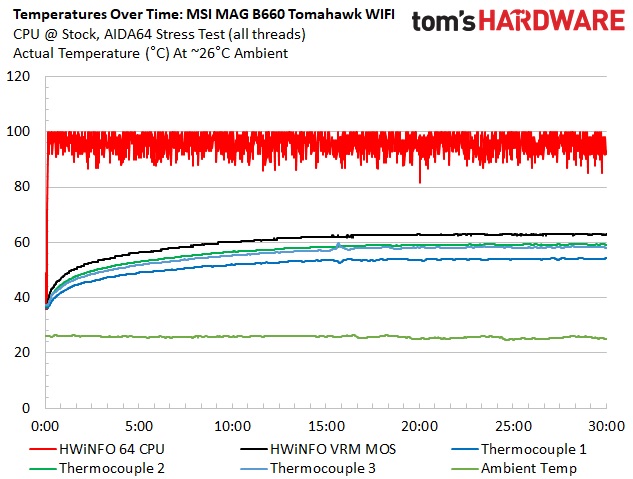
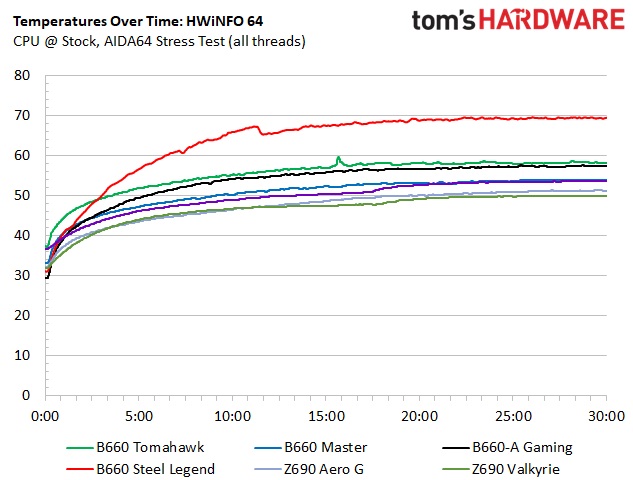
During stock stress testing, we saw thermal throttling due to the board’s liberal use of voltage by default. The CPU thermally throttled almost immediately for this stress test load, which helped keep the VRM temperatures in check. The board peaked around 60 degrees Celsius on our sensors and around 63 degrees according to the internal temperature. The VRM heatsinks kept the MOSFETs running well within specification.
Overclocking
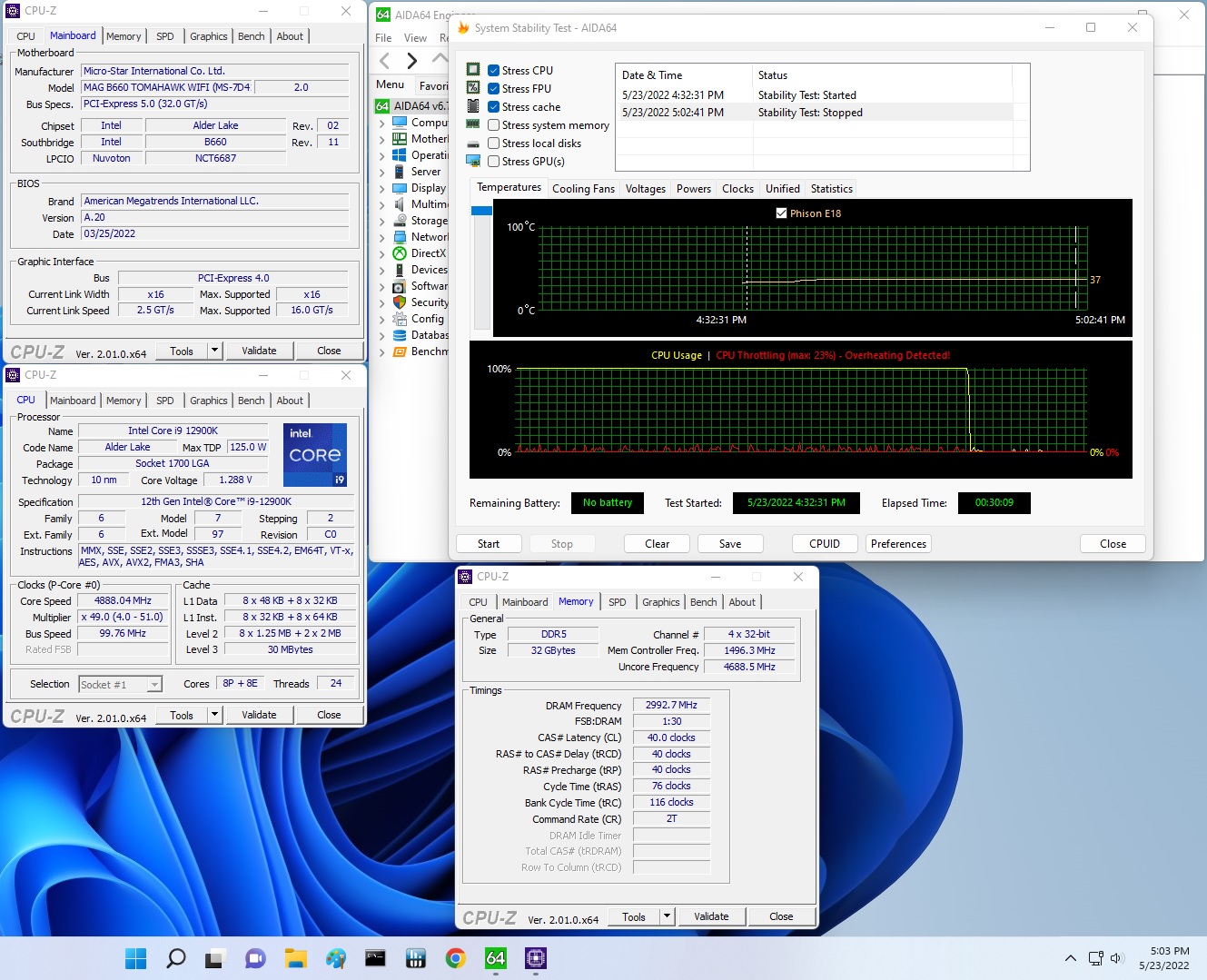
Overclocking the CPU isn’t possible on B660-based chipsets, but the platform allows memory speed adjustment. With our DDR5-5400 and DDR5-6000 kits, we simply set XMP, and off we went without a hitch. Surely there’s some headroom left, but I’d imagine people purchasing a budget-class board aren’t looking to buy expensive RAM that’s far outside the sweet spot of around DDR5-6000.
Bottom Line
MSI’s MAG B660 Tomahawk WIFI positions itself as a more affordable option to build your Alder Lake-based system on. If you want almost everything the Z690 Tomahawk offers but don’t plan to overclock, the B660 Tomahawk is a much less expensive option ($189.99 compared to $269.99/$259.99, DDR5/DDR4, respectively). The most significant differences between the boards come from M.2 socket count (three vs. four), the audio codec (ALC4080 vs. ALC1220), and the Z690 version overclocks and comes with more robust VRMs. In short, if you’re looking to save some money and don’t plan on overclocking, the B660 Tomahawk is a very good option in this space.
Specs-wise, there’s a lot to like here. Although this board, and B660 in general, doesn’t have PCIe 5.0 capability, it has plenty of PCIe 4.0 connectivity to get the most out of your connected devices. Between the six SATA ports and three M.2 sockets (with the EZ clip), there are plenty of options for storage, including SATA-based M.2 modules. If you need a lot of USB ports on the rear IO, the Tomahawk has you covered with nine and a 20 Gbps Type-C port. But it’s not all about the specs either. Even without integrated RGB lighting, the jet-black board looks good with most build themes.
In the end, the B660 Tomahawk WIFI is a well-rounded option for building your Alder Lake-based system. Not only is the sub-$200 price point attractive, but the configuration compares well with its similarly priced peers (Asus Strix B660-A Gaming WIFI D4 and the Gigabyte B660 Aorus Master). At the same price, it’s a toss-up between the Gigabyte and this MSI, with the Asus nearly pricing itself out of the game, costing $40 more. If you’re looking to break into the Alder Lake space while not completely blowing your budget out of the water, the MSI MAG B660 Tomahawk WIFI should be on your shortlist of sub-$200 DDR5-based B660 motherboards.
MORE: Best Motherboards
MORE: How To Choose A Motherboard
MORE: All Motherboard Content

Joe Shields is a staff writer at Tom’s Hardware. He reviews motherboards and PC components.
-
great Unknown A "sub $200" motherboard that's on sale for $270? Suddenly the cost/value parameter shifts to the negative side.Reply -
Why_Me Reply
The link goes to a Z690 board, not a B660 board.great Unknown said:A "sub $200" motherboard that's on sale for $270? Suddenly the cost/value parameter shifts to the negative side. -
great Unknown Reply
Sorry; missed that. Looked for the failure in the wrong location.Why_Me said:The link goes to a Z690 board, not a B660 board. -
javiindo Much better that the b550 TOMAHAWK which it just has a few USB ports, two ethernet ports (99% just need one) and no wifi. I also don't care about rgb.Reply -
Brian D Smith "Just be aware that with some heavy multi-threaded loads, there is the potential of throttling due to CPU temperature. But a quick tweak to the voltage eliminates this common behavior for the platform."Reply
Question...why doesn't this 'tweak' come as the default?